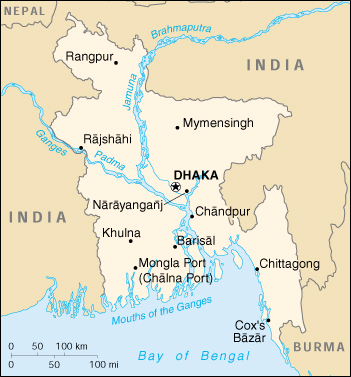

Status Quo Side: Pakistan
Non-Status Quo Side: Bangladesh
Region: South Asia & SW Asia
Conflict Type: Interstate
Issues in Dispute: Ethnic, Independence
[See INP] East Pakistan (now Bangladesh) became part of Pakistan at independence in 1947. Resentful of West Pakistan's domination, the separatist Awami League formed in 1949. A United Front coalition of 5 discordant parties (including the Awami League) defeated the ruling West Pakistani Muslim League in 1954. Economic stagnation in East Pakistan accentuated cultural and linguistic rifts. In 1966 Awami leader Sheikh Mujibur Rahman sought increased autonomy. His arrest helped coalesce Bengali opinion when Pakistani President Ayub Khan was forced out in 1969. Ayub's successor Yahya Khan called for elections.
The Awami League swept East Pakistan, and won a bare majority in the national assembly as well. The West Pakistan leadership was unwilling to accept Mujib as Prime Minister and the assembly never met. Martial law was declared March 1971. Mujib ordered a general strike. Yahya responded with West Pakistan troops. Civil disturbances increased in violence. Mujib was arrested again. On March 26 1971 the Awami League declared independence, and formed a government in exile in India.
Civil war ensued, with about a million Bengalis killed. Millions of refugees poured into India. India declared war on Pakistan on December 3.
The defeat of Pakistan permitted the creation of Bangladesh.
Mujib was freed, and took office. The United Front coalition dissolved and resultant rifts led to a series of coups and military rule.
Pakistan formally recognized Bangladesh's independence.